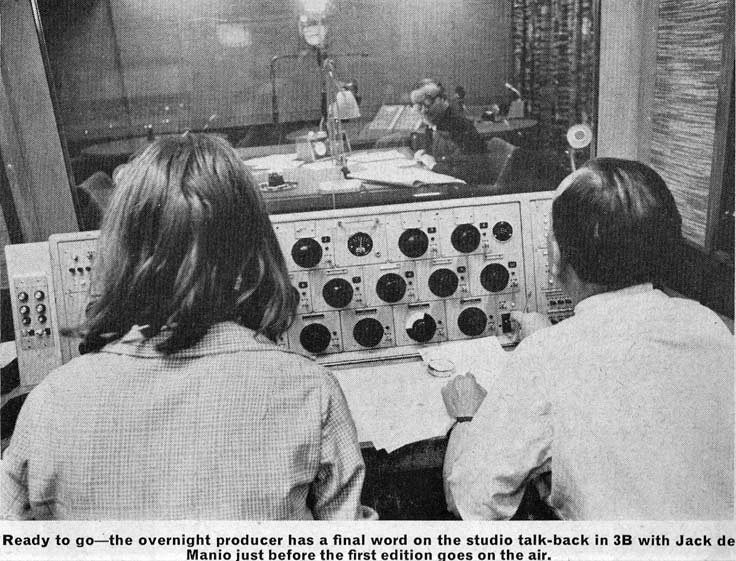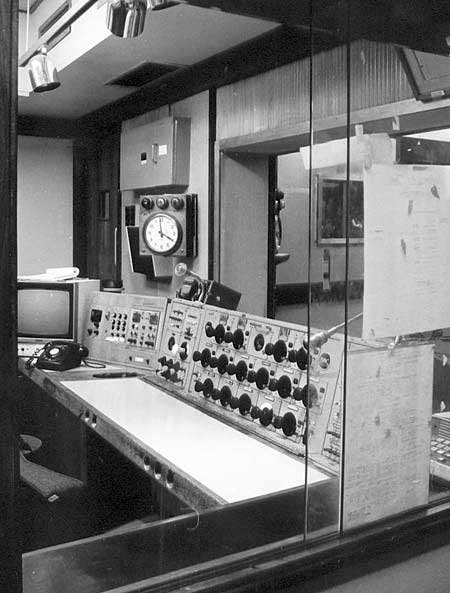
3B was built in what had previously been office space, outside the 'tower' within which most studios were built. It was the first of the Type B mixers (the others being 1A and B9) and it's 'debut' transmission was the very first "Ten o'Clock" programme on 19th September 1960. This programme replaced the nine o'clock news (a 15 minute straight read) and began with a faded Big Ben. It was the first time that Ben had been faded - previously the full strike was used. 3B was also the first studio not wired to the old control room and for the first transmissions it had to be tie-lined from the new control room to Home continuity, with outside sources into the studio being similarly routed. After the transmission the studio was handed back to the installation department, and finally entered full service on 19th November, 1961.
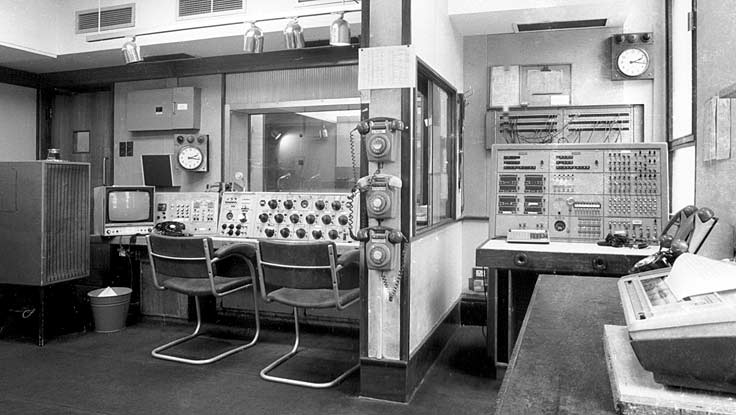
In addition to "Ten o'Clock", 3B was also used by the Today programme and the domestic edition of "Radio Newsreel", which reached an average daily audience of three million in 1960. It also did some of the six overseas editions of RNR, production of which later moved to Bush House. When the Radio 4 sequences started in April 1970 the studio had a very busy day with the transmissions of Today, WATO, PM, Newsdesk (a half-hour programme at 1900) and "The World Tonight". All but WATO and PM later moved to either 3E or 4A.

The desk had ten high-level outside source channels and five low-level channels. The latter were usually used for three mics, tapes (fader often left open, as here) and grams. To the left of the faders are the tone/reh/tx/off buttons, amp change-over switches, tape machine remotes, pre-fade PPM, main gain control, ring-main selectors and monitoring keys. To the right of the desk are lamps indicating cue/clean feed/talkback selections made on the Technical Operator's position and, below them are control line ring/answer and prefade/talkback keys. The left hand wing is a later addition containing a compressor/limiter and 3 pluggable RSAs (Response Selection Amplifiers - i.e. equalisation). There is also a twin Telephone balance unit handling four phones which can be selected to either input by the keys down the middle. The available phones can be seen in the previous photo - the top two on the dividing wall and two phones fed from Traffic which can be seen at the extreme right. The phone unit outputs were usually plugged to two of the OS channels. The RSAs didn't have a high-pass filter capable of suppressing the 'heartbeat' timing pulses on long distance phone calls so a cumbersome passive drama effects filter sat on the top of the desk and was inserted into the output of one of the TBUs. A couple of outside source channel talkbacks were used to provide separate talkbacks to the studio for dual presenter programmes.
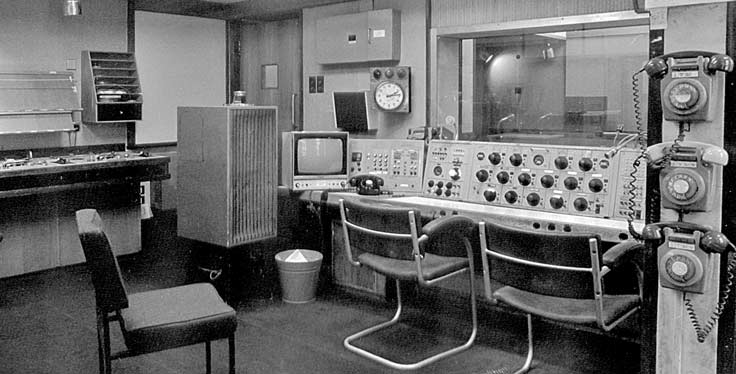
This shot shows the relationship between the panel and the tape machines, which were mounted in the bench on the left. It also shows that the main speaker provided a considerable obstacle to anyone entering the cubicle!
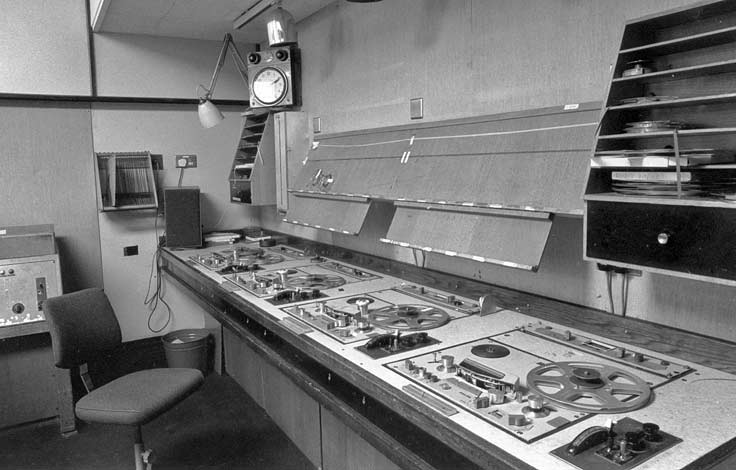
The Philips tape machines were much loved. A simple tape path made them easy to lace up. They were also good machines for editing. They were slow spooling, especially with NAB reels. Perhaps that was a good thing as, without any logic to control speed, the brakes were applied fully by holding down the stop button. The record guard (a BBC mod consisting of a piece of metal tubing around the record button) could cause the rec button to stick down at the end of a recording and if you wound back by hand against the heads listening for the end, you never found it! This happened often enough for a neon indicator to be added above the button. Before the arrival of the M15As in H30 there were no machines in the area with accurate timers. To check the duration of inserts they were often played through at double speed. It wasn't entirely unknown for the machine to still be set at 15ips when the tape was transmitted....
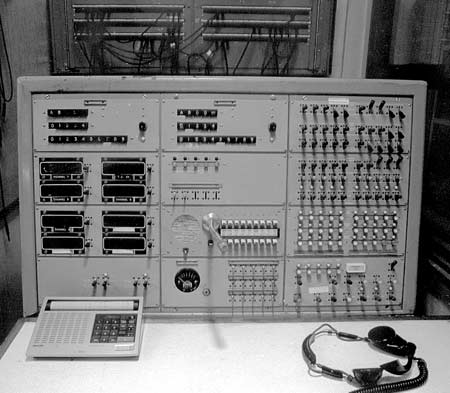
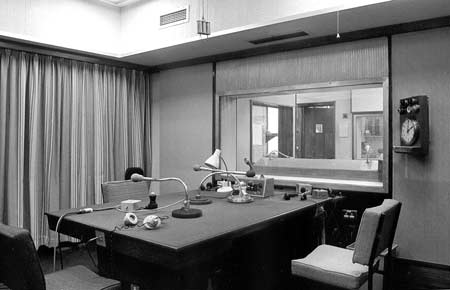
In the studio Beyer M160 mics have replaced the original 4038's, two of which were suspended from the ceiling by the mechanism visible at the top of the picture.
The small window to the right of the next picture looked into a tiny lobby which had doors to corridor, studio and cubicle.
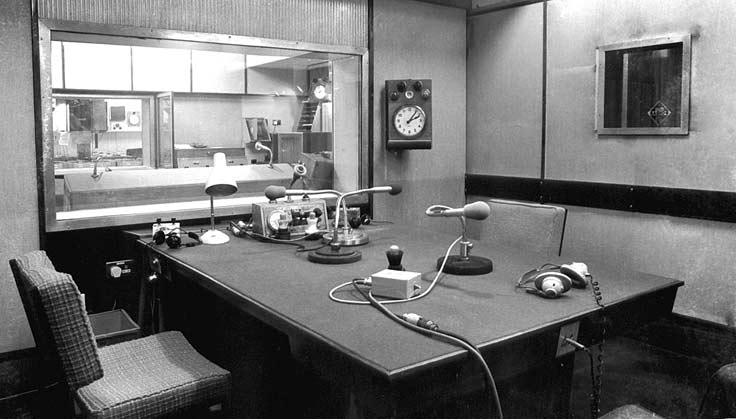
As can be seen in these shots, 3B's studio was not exactly huge. This was not normally a problem, but, as Alma Cadzow recalls, the musical requirements of the 'Today' programme could present a challenge:
"it was a Saturday morning version of 'Today', which was more of a magazine than a news programme. There used to be a ten-minute news with tape inserts beforehand, then a five minute break, I think, then 'Today' itself.
"Bob Holness was presenting, I was on panel. The producer brought a couple of chaps into the studio and one of them began assembling what turned out to be an alphorn. It soon became obvious the thing was too long to fit into the studio. The producer insisted it had to be played -live - to introduce the programme.
"Eventually we rigged a microphone in the corridor outside, the alphorn player was installed there and instructed to start playing when the red light came on. A very reluctant continuity operator was persuaded to dispense with the customary warning red flashes before going to air. At transmission time, on went the red light and there was a heart-stopping pause as the player took a deep breath before starting to play. At a suitable point the horn was tastefully faded out - but, of course, we'd had to leave the studio doors ajar in order to lead out the mic cable, so he was still faintly audible
during the subsequent interview before someone sneaked out through H30 and waved him to a stop.
"The interview itself was wonderful - it became clear that the interviewee had a very sketchy command of English, and poor Bob struggled through some strange answers to his questions. The SMs were in tears of laughter and a small crowd gathered in H30 as word got round....."
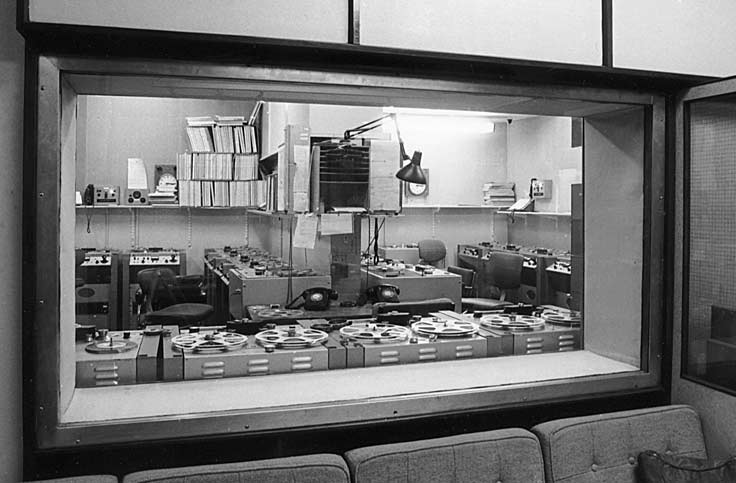
The view from 3B's cubicle into H30. The seating in front of the window provided a useful place for a snooze during quiet night shifts, the double doors into the channel propped open so that the phones could be heard!
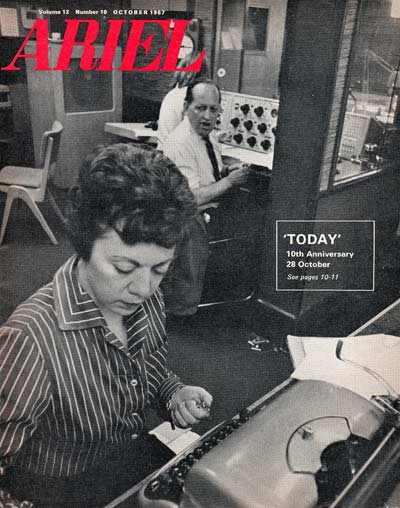
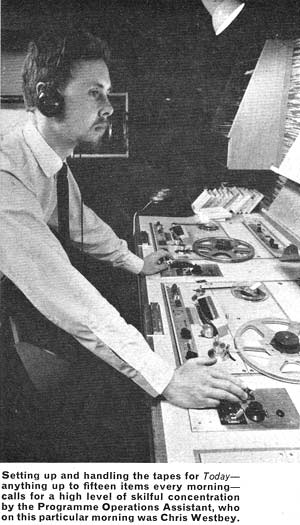
Jack de Manio was the regular presenter of what was then a much lighter programme than it is now. He was rather prone to mis-read the clock so his time checks were somewhat unreliable!

